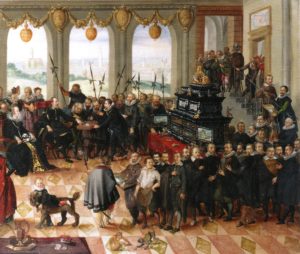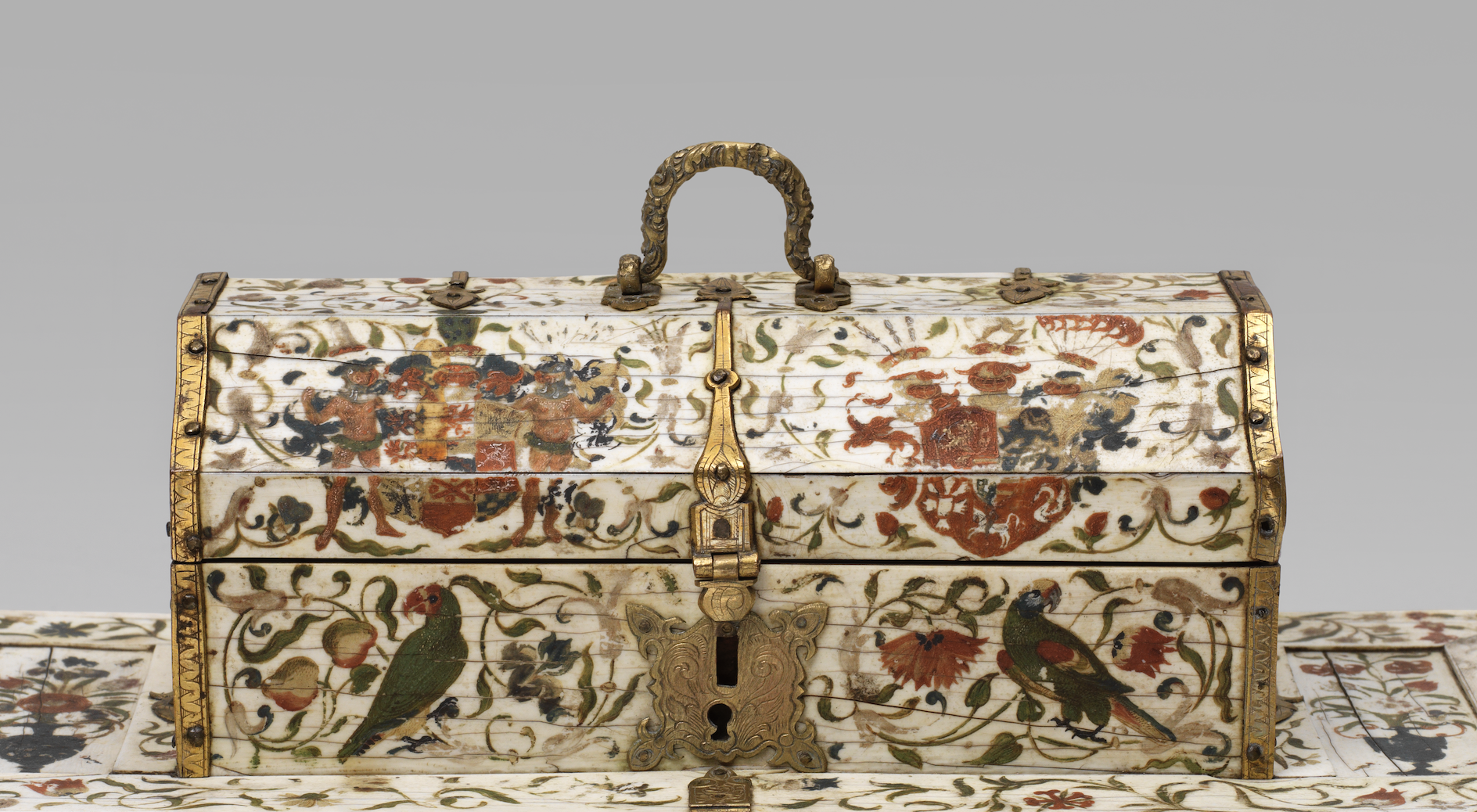For a single object, this box has a rich history complete with important owners and possible connections to famous craftsmen who were responsible for the creation of significant luxury pieces. There are two coats of arms on top of the box, which indicate that it was probably created to celebrate a marriage between two aristocratic families.
The coat of arms on the husband’s side may be that of the Dukes of Pommern-Stettin and the coat of arms on the wife’s side seems to represent the Schleswig-Holstein family. Even with this attribution, there were multiple marriages between these families in the early 1600s when the box was probably made, so this does not entirely solve the mystery.
Click on either of the coats of arms shown on the box for a more detailed view of the crests of the Dukes of Pommern-Stettin and the Schleswig-Holstein family!
One of the possible marriages that the box could have been made for is that of Philipp II, the Duke of Pomerania, who married Sophie of Schleswig-Holstein-Sonderburg in 1607. The Duke was a great patron of the arts in Pomerania, an area which is now part of Northern Germany and Poland.

Presentation of the Pomeranian Art Cabinet to Duke Phillip II of Pomerania, 1617. © bpk / Kunstgewerbemuseum, SMB / Saturia Linke.
Duke Phillip II also had connections to the famous art dealer Philipp Hainhofer of Augsburg. Hainhofer commissioned a cabinet of curiosities called the Pomeranian Art Cabinet and presented it to the Duke in about 1611. Made by the cabinetmaker Ulrich Baumgartner of Augsburg, the cabinet was sadly destroyed in World War II. Baumgartner was famous for making many other pieces of beautiful furniture including cabinets and ivory-veneered pieces like this box. Could this be a surviving work of his? Is it possible that Baumbartner made this box, and that Philipp Hainhofer sold it to Duke Phillip II of Pomerania on the occasion of his wedding?
The possibility that the box may have been made for Duke Philip II of Pomerania is a new development in the life of the box. When it was purchased in the late 19th century, its owner, Thomas Gambier Parry (1816-1880), thought it celebrated the marriage of the Great Elector of Brandenburg, Frederick William, to Dorothea, daughter of Phillip Duke of Holstein Glucksburg in 1668. There were also other marriages between these two families that it could have been made for.
A similar casket, with the unconventional double-lidded design and whose manufacture is also attributed to Augsburg has been found to date but as it is unpainted it looks very different. This German city was the indisputable centre of luxury furniture in the 1600s—with local makers creating cabinets of curiosity that reflected the worldview of the age. Even though it is not a true cabinet, this exquisite ivory box certainly does reflect worldly knowledge of the time, and Augsburg is the likely place of manufacture of the Courtauld casket.
The specialty materials used to make this luxury object would have been very expensive. An organic test on a sample of the paint revealed that even some of the paint pigments are rare—the green pigments contain a high amount of copper carboxylate that was used especially for decorative surfaces.


